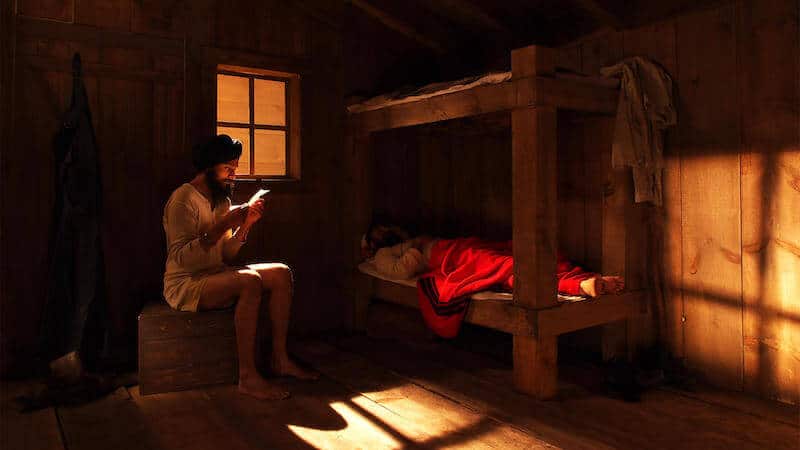Our Feet Walk the Sky
Women of the South Asian DiasporaShare Article
Edited by the
Women of South Asian Descent Collective
Aunt Lute Books,1993 $12.95
The Women of South Asian Descent Collective was formed in the spring of 1991 by a group of students in Jane Singh's South Asian American history class at UC Berkeley. Noticing a lack of materials on South Asian women in the diaspora, they decided to produce Our Feet Walk the Sky.
Despite some excellent essays and three wonderful stories, the anthology is much less than the sum of its parts, and the culprit is a lack of clear editorial direction. Jane Singh's foreword describes Our Feet Walk the Sky as a "comprehensive work on South Asian American and South Asian immigrant women in the United States" but the contents of the anthology meander to the origins of India's Parsi community, the South Indian community of Reunion and causes of linguistic tensions in Sri Lanka, while at the same time excluding people and places pertinent to the history of South Asian American women.
The essays that do examine the situation (sun intended) of South Asian American women are the most valuable portions of the book. Lata Mani rends the common-place dichotomy of East vs. West with brilliance and verve. The mother-daughter pair Sayantani Dasgupta and Shamita Dasgupta describe their formulation of an Indian American feminism and Naheed Islam discusses the marginalization of the smaller nations within the rubric 'South Asia! Kamala Visweswaran's essay Predicaments of the Hyphen contains many fascinating bits of information on the history of South Asian immigration to America, such as the development of the 'Mexican Hindu' community. Ms. Visweswaran notes that before 1951, many Punjabi men in California married Hispanic women because as two brown-skinned people, they would not be violating any miscegenation laws.
Ms. Visweswaran's essay and a tangled oral history are all the anthology offers in the way of historically-focused material about South Asian American women, which is the most important way it fails as a resource. No women from the older South Asian American communities are represented. There are no contributions from prominent South Asian American women such as Urvashi Vaid, Bharati Mukherjee, Gita Mehta, etc., and except for a mention of Manavi, no examination of the important organizations and cultural networks created by South Asian American women. While child abuse, spousal battery, lesbianism, etc. are mentioned, there is little sense of the community's relationship to these matters. There is no information about the growth of lesbian and bisexual women's groups such as Anamika or Shamakami, or women's groups such as Shakti. With the exception of a few poems about exoticization or ignorance, America is a surprisingly small presence in the anthology.
A good example of the last is Zainub Ali's story, Daddy, which concerns a pubescent girl's dislike for her father's second wife. The girl's blinkered perspective leaves out all the interesting questions about this triangle: how does it belong in America, and how does their class status in America, affect this bigamous relationship? How does the second marriage relate to the father's need to retain his identity in America? How do the mother's frequent trips to India relate to her need to retain her identity? In this story, America is the site of reproduced patriarchy and India is the site of the mother's forays into freedom, an interesting dichotomy that is never explored. The skimpiness of this story and several others, including Chitra Divadaruni's Yuba City, is that it leads the reader to fill in the blanks with facile, stereotypical generalities about the relationships depicted, instead of using enough specificity to deepen the reader's understanding.
Lata Mani's essay on Indu Krishnan's film Knowing Her Place is a devastating critique of the opposition of the traditional, patriarchal East vs. the modern, liberal West, but there seems to be an enormous ignorance in many of the pieces in the book about Indian modes of feminism or self-actualization. The goddess Sita is often mentioned, but no one examines her final rebuke of Rama after her 'purity' is proven. No one counters familial injunctions against women's education with the example of the Vedic women sages. The wailing about education is such that an uninformed reader would have no sense that many South Asian American women are professionals prominent in their fields.
Most of the anthology addresses personalized issues of sexual freedom and identity, i.e. arranged marriages. Punam Luthra's graceful and simple essay Pati Dev, about her abusive husband and supportive family, is the best of the (numerous) lot. Much of the poetry is blatantly manufactured without concern for poetry, as if somehow the essay form is too humble to be used. The only most prominent poet in the anthology, Chitra Divakaruni, weighs in with some of her weaker work.
Our Feet Walk the Sky does introduce three new, talented South Asian writers. Natasha Pratap's beautiful Parvati is the story of a servant woman's effort to raise her son properly. Though it elides questions of Parvati's resentment of her employers, its subtle and shaded depiction of Parvati's relationship with her husband is extraordinary. In Maria by Gaurangi Kamani, the lusty girl narrator manipulates a servant woman into sexual relations. Qirone Adhikary's Marriage of Minnoo Mahsi is the rollicking tale of how the narrator's headstrong lesbian aunt avoids marriage as a teenager.
That its best fiction is not set in America is typical of Our Feet Walk the Sky. Despite several strong pieces, it is a rather random anthology of writing held together more by the fact that all the writers are South Asian American women than anything else, and its value to the reader depends entirely on whether that is enough.









